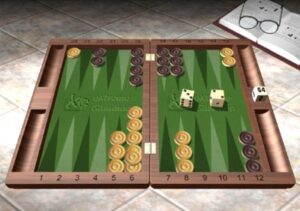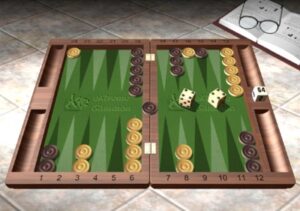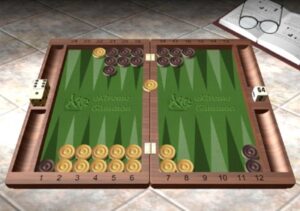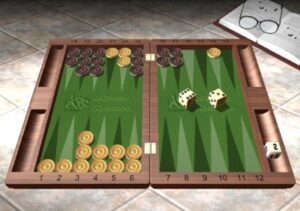
One Man Back: Step Up or Not?


Bill Robertie welcomes the opportunity to share his knowledge of backgammon with experienced players and beginners alike.
On his blog, Robertie publishes set and equipment reviews, creates quiz contests and provides free lessons. He would be remiss not to include his Robertie’s Rules! He also educates readers of the Gammon Press blog on the history of the game, offers backgammon instruction and more.
Use the form to search books, blogs, and resources.
Browse blog categories using the drop-down.

Cash game, center cube.

White to play 4-4.
This position was originally Problem 166, where Black had just danced and the question was whether or not White should double. (The answer was borderline double/no double, and easy take.) Some of the responders asked how White should play a subsequent 4-4, and that did seem like an interesting idea for a problem, so here it is.
Cash game, center cube.

Should White double? If White doubles, what should Black do?
By convention, most cash games use several auxiliary rules beyond the basic rules of backgammon, intended both to speed up the games and increase the stakes in an exciting way. The most common cash game rules are these:
The Jacoby Rule: You can’t win a gammon unless the cube has been turned. This rule eliminates long, dull games where one side gets a huge early edge and plays for the gammon while leaving the cube in the middle.
Automatic Doubles: If both sides roll the same number to start the game, the cube starts at 2. This rule doubles the stakes in one game out of six. Since weaker players tend to play more cautiously with bigger cubes, this rule strongly favors the better player.
Cash game, White owns the cube.

White to play 6-3.
Checker play in holding games is generally a pretty simple matter. When you’re holding onto an anchor and you’re way behind in the race, you try to follow three rules:
1) Keep your anchor as long as you can.
2) Run off your anchor when the alternative is breaking your board.
3) Run off the anchor if staying raises your gammon chances a lot.
If you’re familiar with these rules, you’ll be able to handle most normal holding game positions well.
Things get trickier when you have a third checker back. The third checker can generate more potential shots; it can also get you gammoned if Black can point on the checker and you get stuck on the bar a long time. This position shows a typical situation: Should White stay to get more shots, or run to eliminate gammon chances?